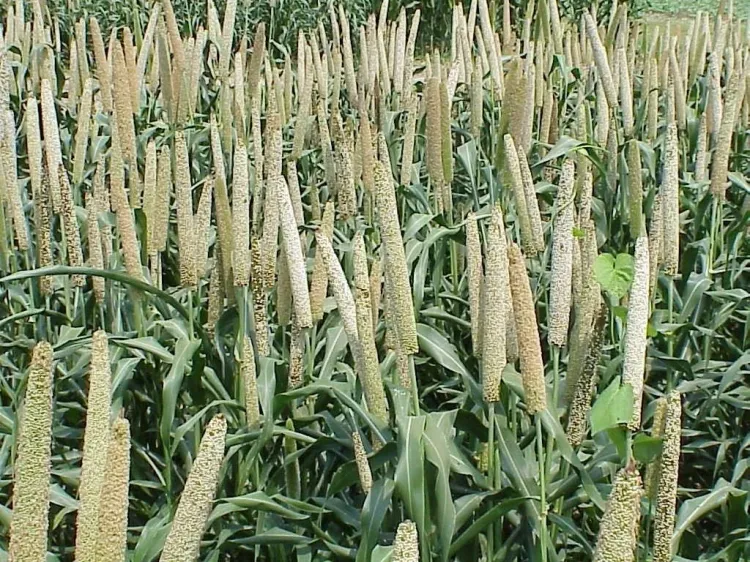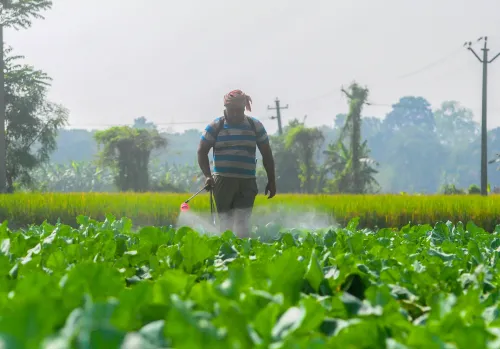Has the total area sown under kharif crops in India exceeded 1,039.8 lakh hectares?

Synopsis
Key Takeaways
- Total area sown under kharif crops reached 1,039.81 lakh hectares.
- Increase of 37.39 lakh hectares compared to last year.
- Significant rise in rice cultivation to 398.59 lakh hectares.
- Government policies aim to enhance farmers' incomes and control food inflation.
- Favorable monsoon rains have aided cultivation.
New Delhi, Aug 18 (NationPress) The total area cultivated with kharif crops in the ongoing season has risen by 37.39 lakh hectares to 1,039.81 lakh hectares as of August 15 this year, according to data released by the Ministry of Agriculture and Farmers Welfare on Monday. This is an increase from 1,002.41 lakh hectares during the same period last year.
This growth in sown area is expected to enhance production, which would subsequently boost farmers' incomes and assist in controlling food inflation.
The official statistics reveal that the area designated for rice has reached 398.59 lakh hectares this year, up from 325.36 lakh hectares in the same timeframe last year.
The area under pulses, including varieties like urad and moong, has increased to 109.52 lakh hectares compared to 108.39 lakh hectares during the previous year.
Additionally, areas sown with coarse cereals or millets such as jowar, bajra, and ragi have surged to 182.34 lakh hectares this season, rising from 173.22 lakh hectares in the same period last year.
The expansion of sown areas this season can be attributed to favorable monsoon rains that have aided sowing in the country’s unirrigated regions, which comprise nearly 50 percent of the nation's agricultural land.
The area under sugarcane has also shown growth, increasing to 55.16 lakh hectares from 54.88 lakh hectares in the previous year.
The Cabinet Committee on Economic Affairs, led by Prime Minister Narendra Modi, on May 28 this year, sanctioned an increase in the Minimum Support Prices (MSP) for 14 kharif crops for the marketing season 2025-26 to guarantee profitable prices for farmers and encourage production.
The most significant absolute rise in MSP compared to last year has been proposed for nigerseed (Rs 820 per quintal), followed by ragi (Rs 596 per quintal), cotton (Rs 589 per quintal), and sesamum (Rs 579 per quintal).









